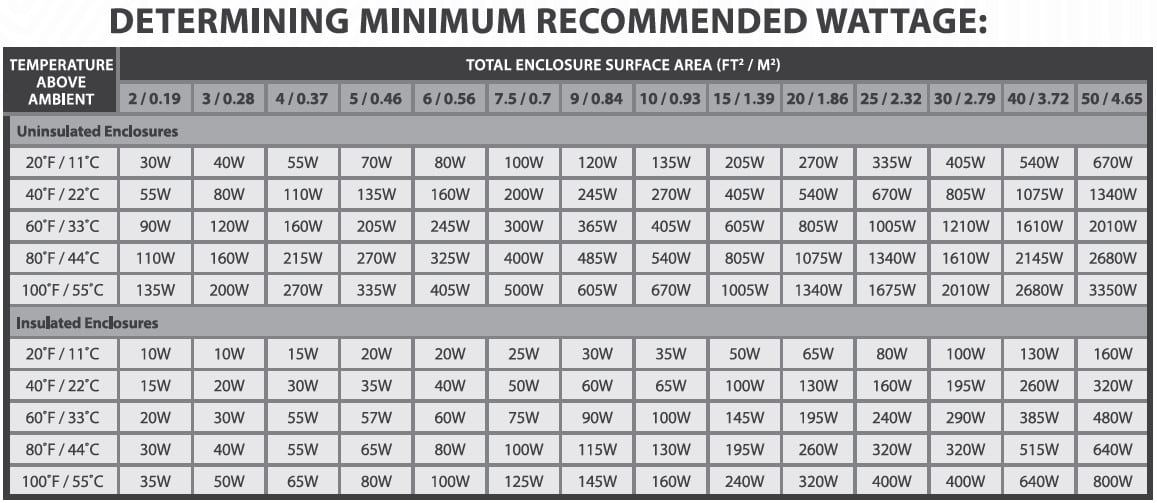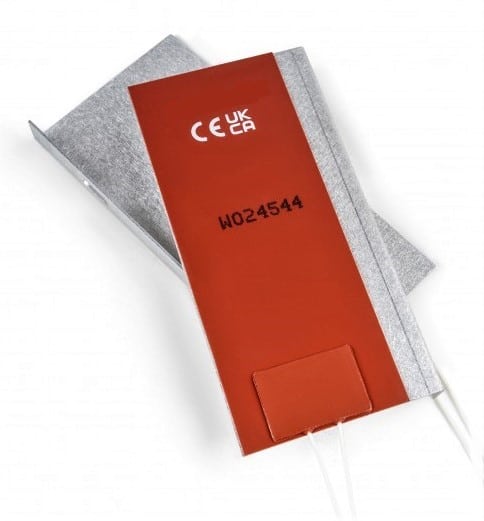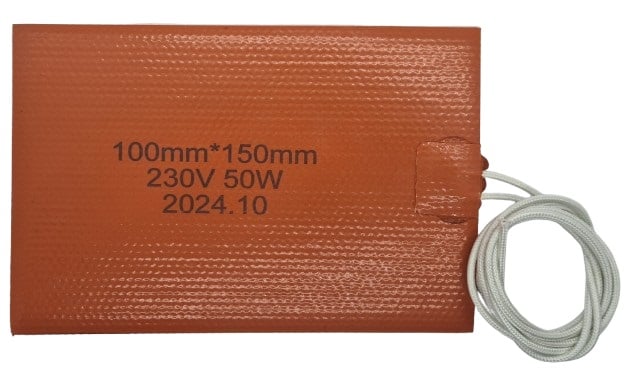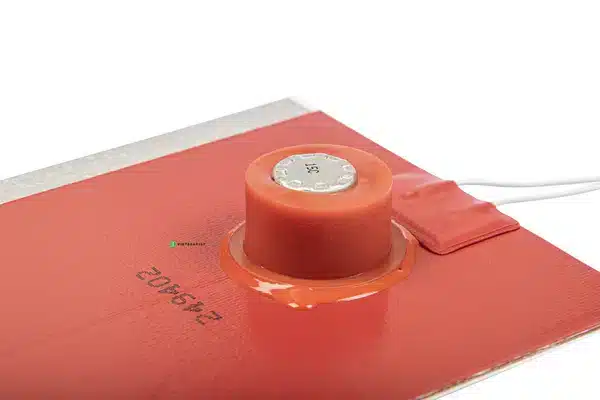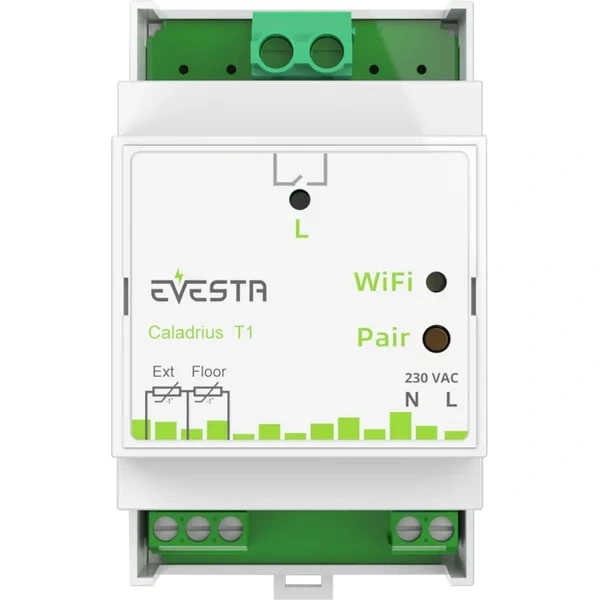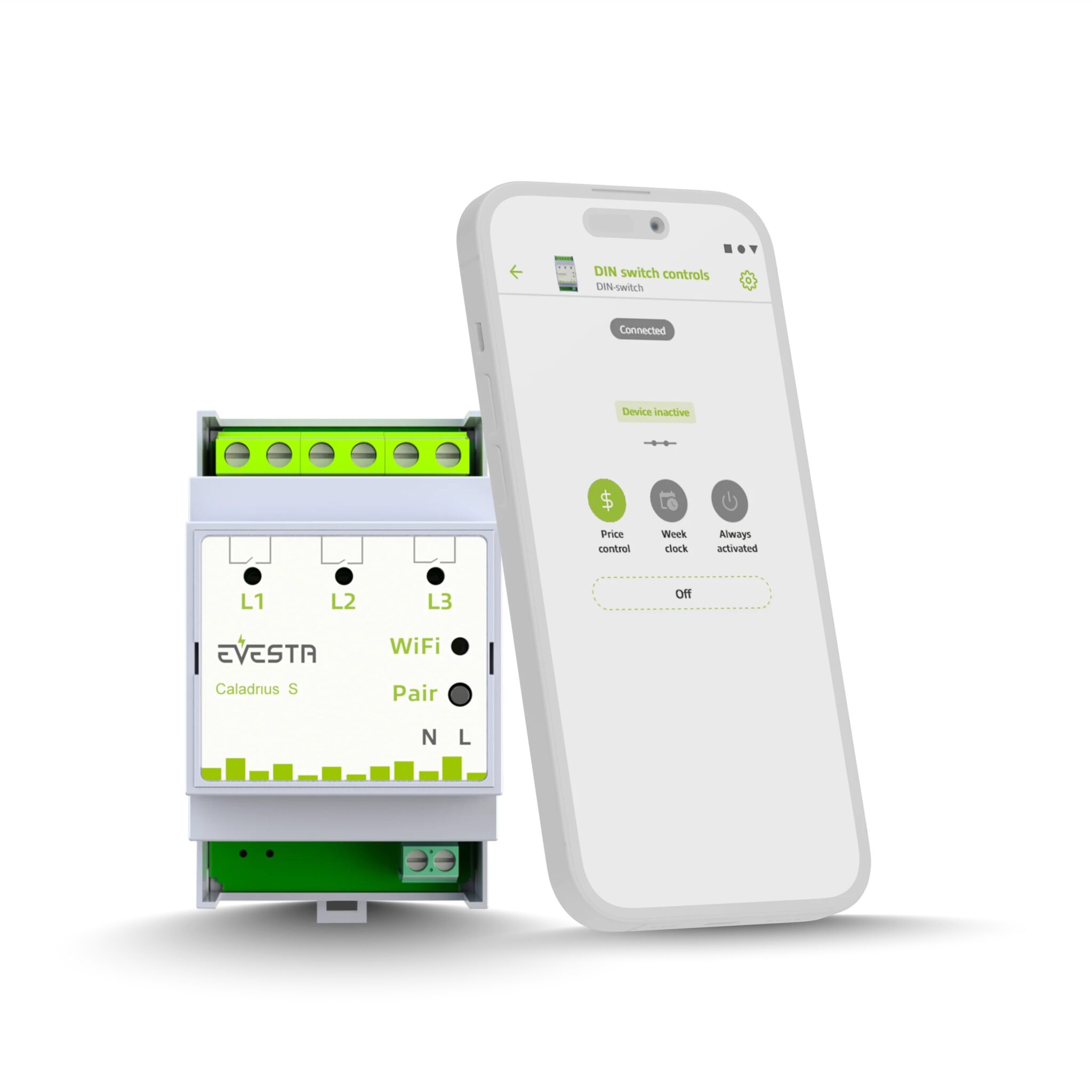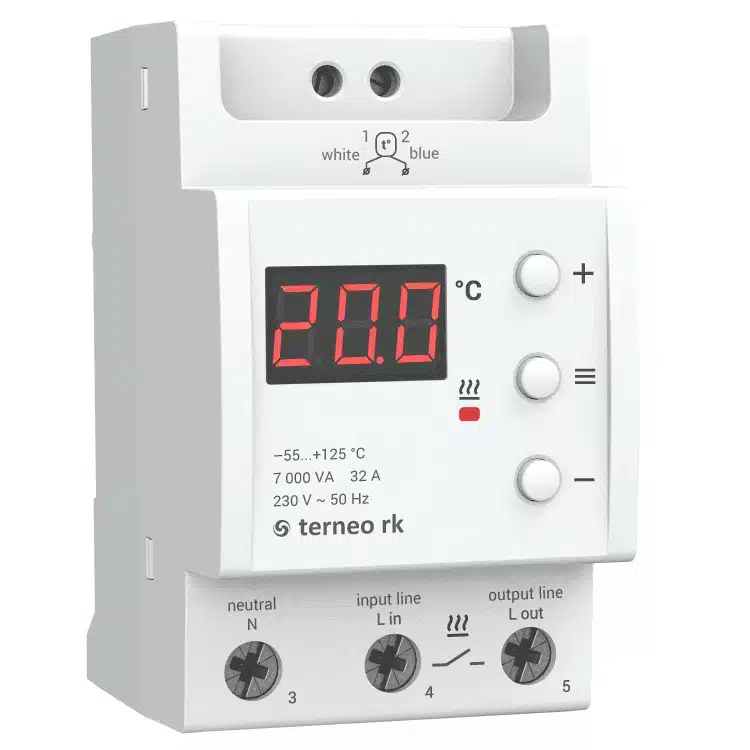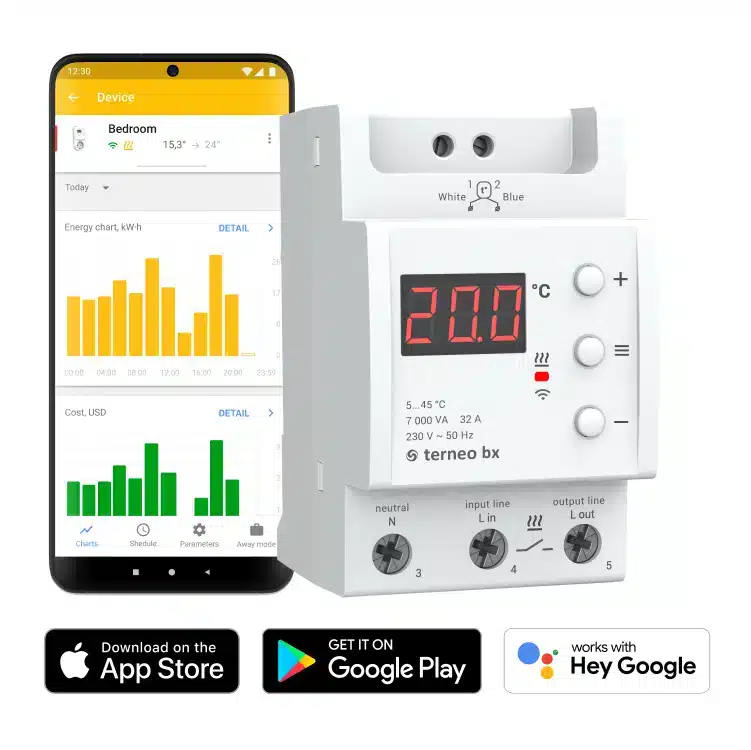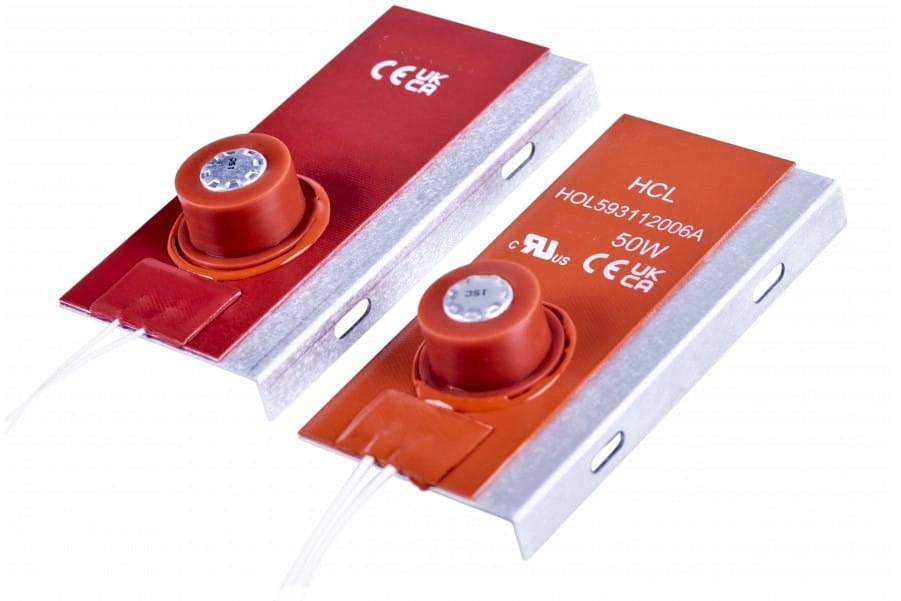
Heating element for an electrical enclosure
The enclosure heating element prevents freezing and condensation while maintaining a stable temperature. The enclosure heater provides a compact and efficient heating solution for small—to medium-sized enclosures and cabinets containing electronics.
The electrical enclosure heater is available in standard capacities of 50W, 100W, and 200W, with power supply options of 120V or 240V. It can be supplied with or without an integrated thermostat.
The enclosure heater is resistant to a wide range of chemicals. It has a pressure resistance of 2.5 bar and steam resistance up to +130 °C.
The thermostat in the heating element activates when the ambient air temperature drops below +5 °C and deactivates when it reaches +15 °C. The hysteresis in both cases is +/- 3 °C.
Product Range and Prices (incl. VAT):
- HL2050 (50mm x 125mm) 240V 50W with thermostat — €46.97
- HL2051 (50mm x 250mm) 240V 100W with thermostat — €59.17
- HL2061 (50mm x 125mm) 240V 50W without thermostat — €39.65
- HL2062 (50mm x 250mm) 240V 100W without thermostat — €48.97
- HL001-2064 standalone thermostat (self-adhesive) — €15.25
Flexible Adhesive Heating Element (without thermostat):
- (100mm x 150mm) 240V 50W — €26.00
- (100mm x 200mm) 240V 100W — €28.00
- (150mm x 200mm) 240V 60W — €38.00
Applications of Enclosure Heating Element:
- ATMs
- Control panels for outdoor equipment
- Enclosures for automation devices
- Security and alarm systems
- Condensation prevention
- Frost protection for electronics
The enclosure heating element features a minimalist design and takes up minimal space.
Dimensions of Electrical Enclosure Heater:
- 50W – 63mm x 127mm, mounting base 12mm x 127mm
- 100W – 63mm x 254mm, mounting base 12mm x 254mm
- 200W – 114mm x 254mm, mounting base 12mm x 254mm
Features:
- The thermostat activates when the temperature drops below +5°C and deactivates at +15°C.
- Power cables: 1 meter in length.
- Relay tested for 100,000 switching cycles.
Power Selection:
The power of the enclosure heating element should be chosen based on the required temperature rise above the ambient temperature and the enclosure’s surface area.
Refer to the table below for detailed calculations:
No video available.
